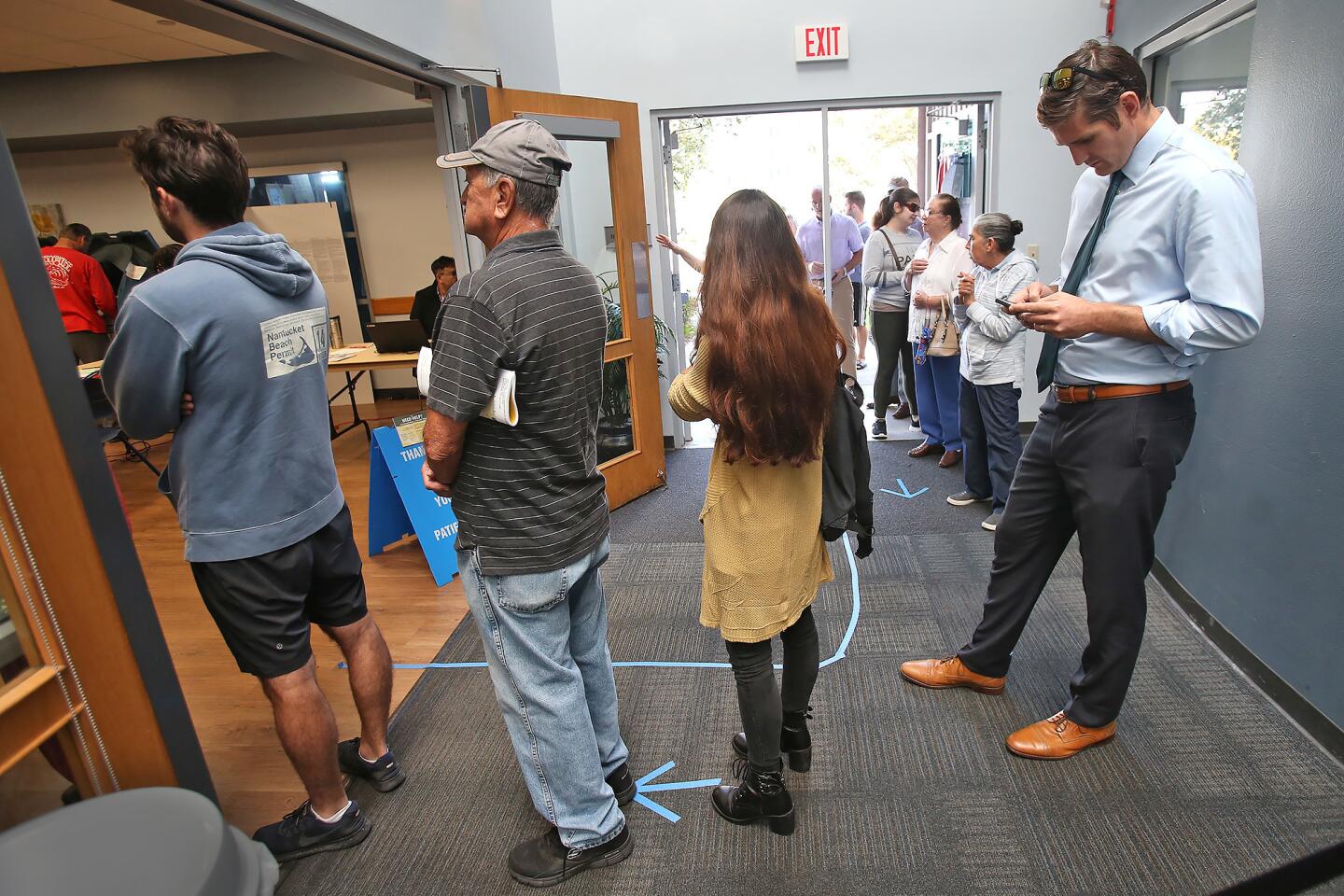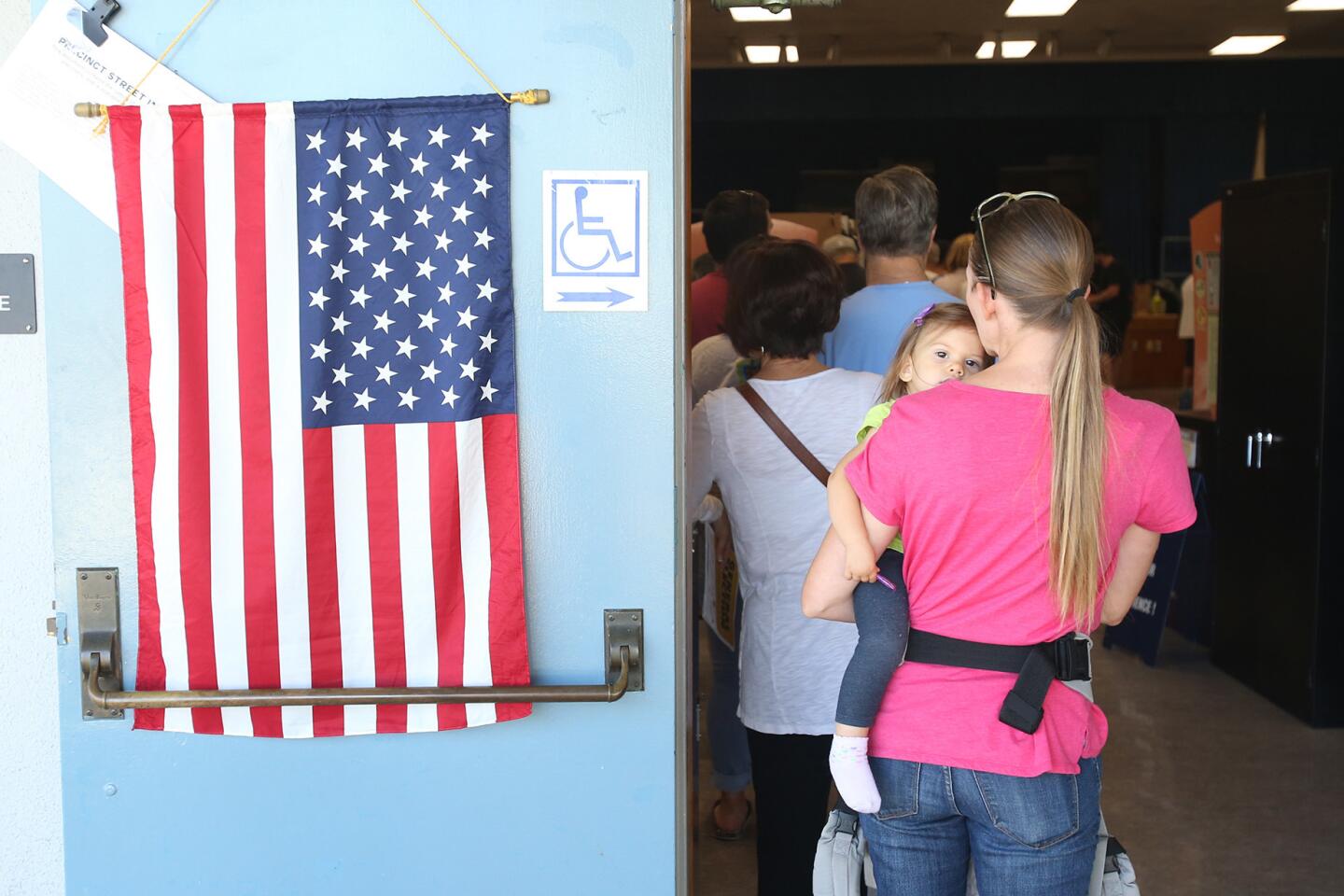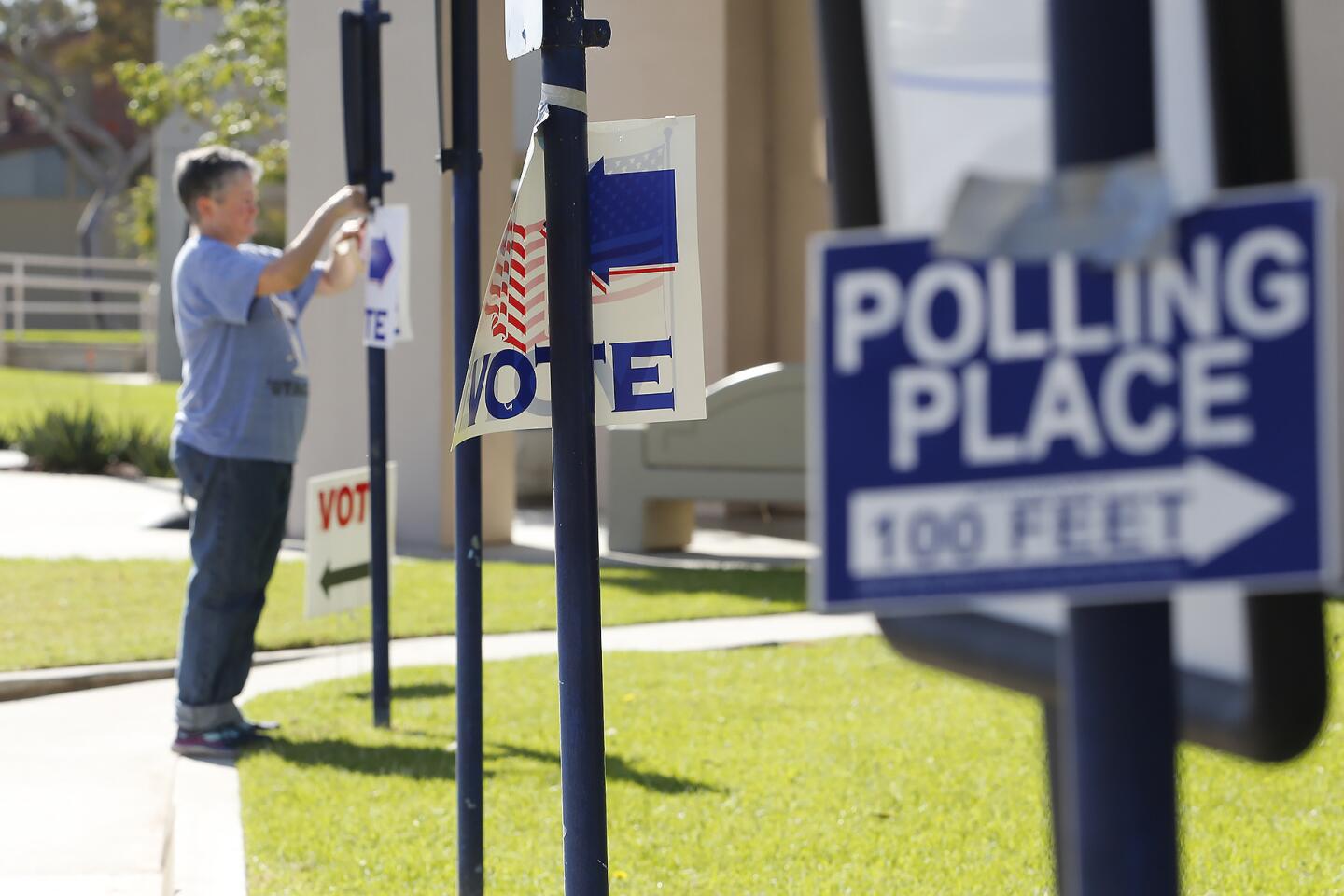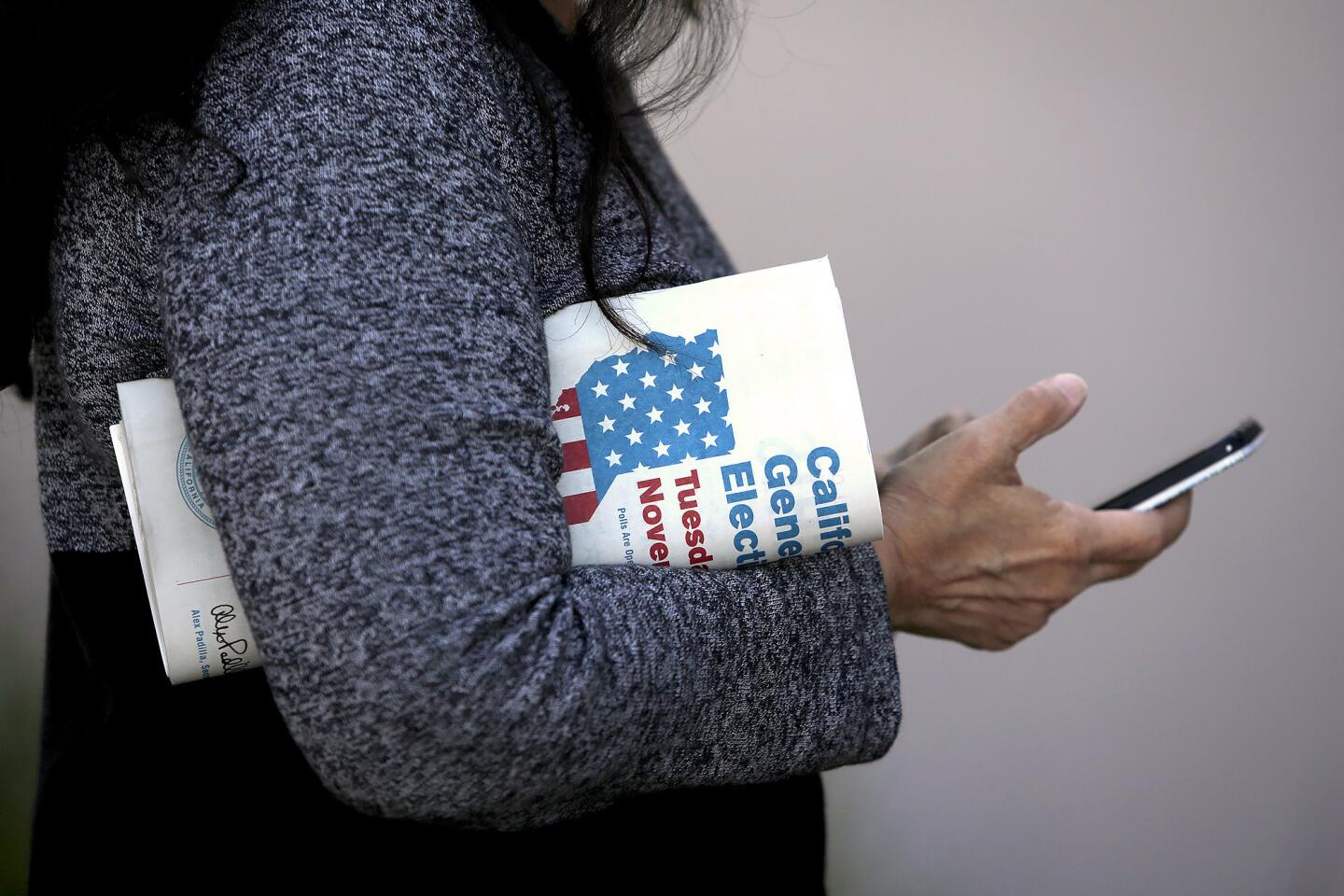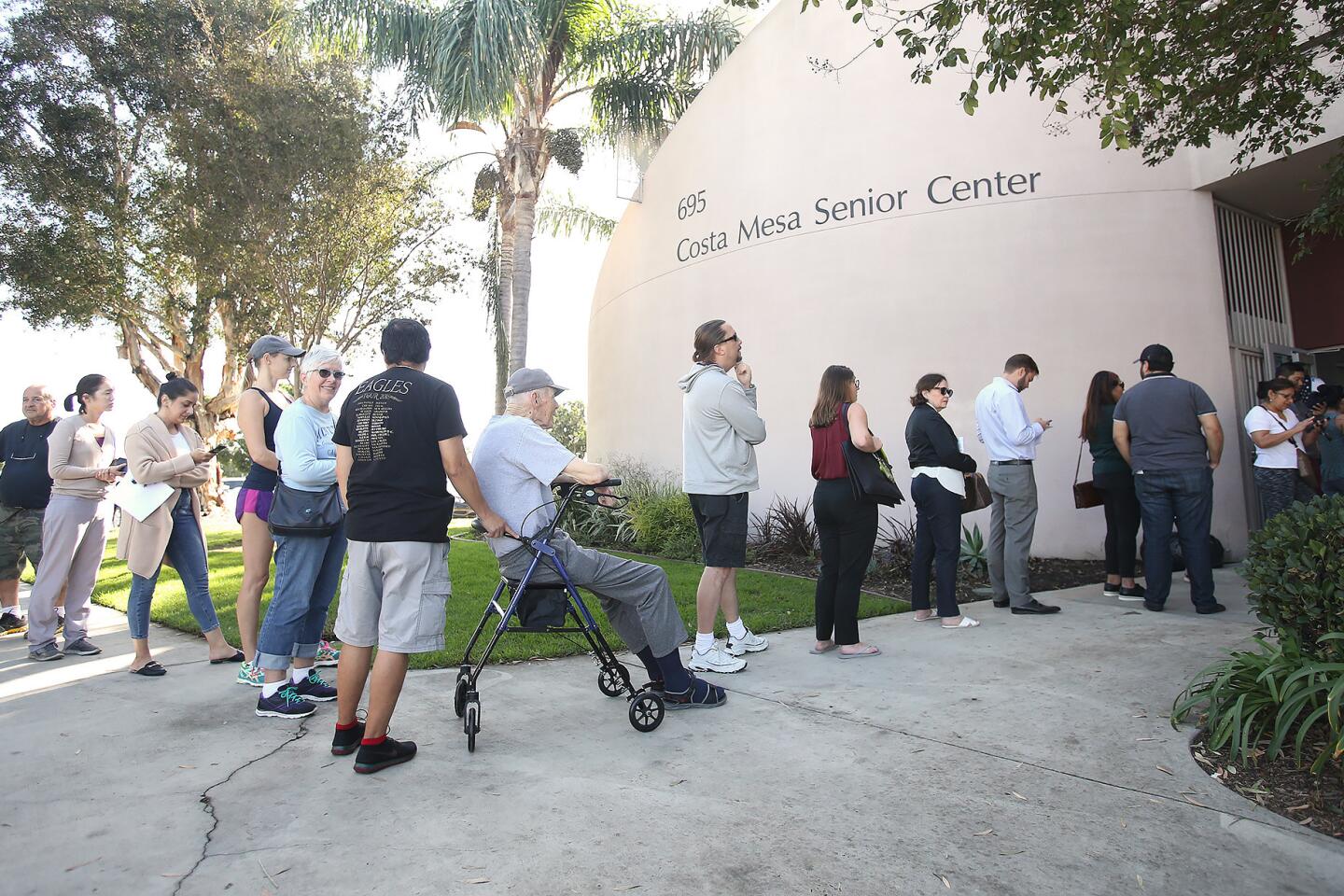Costa Mesa voters take city’s new election method for a spin
As voters nationwide flocked to the polls Tuesday to again take part in the great American experiment, Costa Mesa residents conducted a field test of their own as they voted in the city’s new election system.
Those lined up at local polling places were effectively the guinea pigs for Costa Mesa’s move away from its traditional at-large system — in which residents citywide could cast ballots for any City Council candidate — to voting districts, with residents in designated areas choosing one person from their area to represent them.
Supporters of the change have said it could bring additional attention and resources to neighborhoods that have traditionally been neglected. Other observers have been more skeptical, saying they worry that council members could end up pitting the interests of their districts against others rather than focusing on the city as a whole.
Westside resident Laura Tait said Tuesday that the move to districts helped her feel “more included and more able to make a proper decision” about whom to support this year.
“If you don’t know what you’re voting for, it’s hard to vote,” she said after casting her ballot at the Costa Mesa Senior Center.
The Senior Center is in voting District 5, a somewhat U-shaped slice of the city that includes the downtown area and about half the Westside. Council seats there and in Districts 3 and 4 are up for grabs in this election.
The line of voters at the Senior Center stretched well out the door throughout the morning.
Some polling places were a bit less crowded in District 4, which covers a dense pocket of the Westside south of the Fairview Developmental Center, stretching from Harbor Boulevard west to Monrovia Avenue and south to West 17th Street.
Resident Karina Hurtado was one of the people voting at the polling place at Pomona Elementary School.
Since she’s 19, this is her first time participating in a local election. She said she wasn’t aware that Costa Mesa was switching its voting method but said it sounds like a positive change.
Districts, she said, can give residents a closer, more direct conduit to “the people that they’re actually voting for.”
In a way, that’s why Costa Mesa moved to district-based elections.
In 2016, a Malibu-based law firm threatened to sue the city, alleging that its at-large voting method violated the California Voting Rights Act of 2001 by diluting the ability of local Latino residents to elect their preferred candidates.
To stave off the litigation, the City Council sought and received voter approval to move to districts, which supporters say can fortify the electoral power of minority groups.
Adopting districts was just one prong of Costa Mesa’s election overhaul. Residents this year also for the first time can vote directly for mayor, a position that council members have traditionally filled by a vote among themselves. Unlike the district representatives, the mayor is elected by citywide vote.
Standing outside the polling place at the Civic Center fire station on Vanguard Way, Sara Johnston — a resident of District 3, which includes College Park, Mesa del Mar and a portion of the upper Eastside — said Tuesday that having a directly elected mayor “seems like a cool thing and a good idea.”
Some critics, however, have said the practical effect of the mayor being chosen citywide is that one district will end up with two representatives and therefore wield an outsized influence on the council.
As a result of all the changes to Costa Mesa’s voting system, the City Council expands from five members to seven.
Twitter @LukeMMoney
All the latest on Orange County from Orange County.
Get our free TimesOC newsletter.
You may occasionally receive promotional content from the Daily Pilot.

